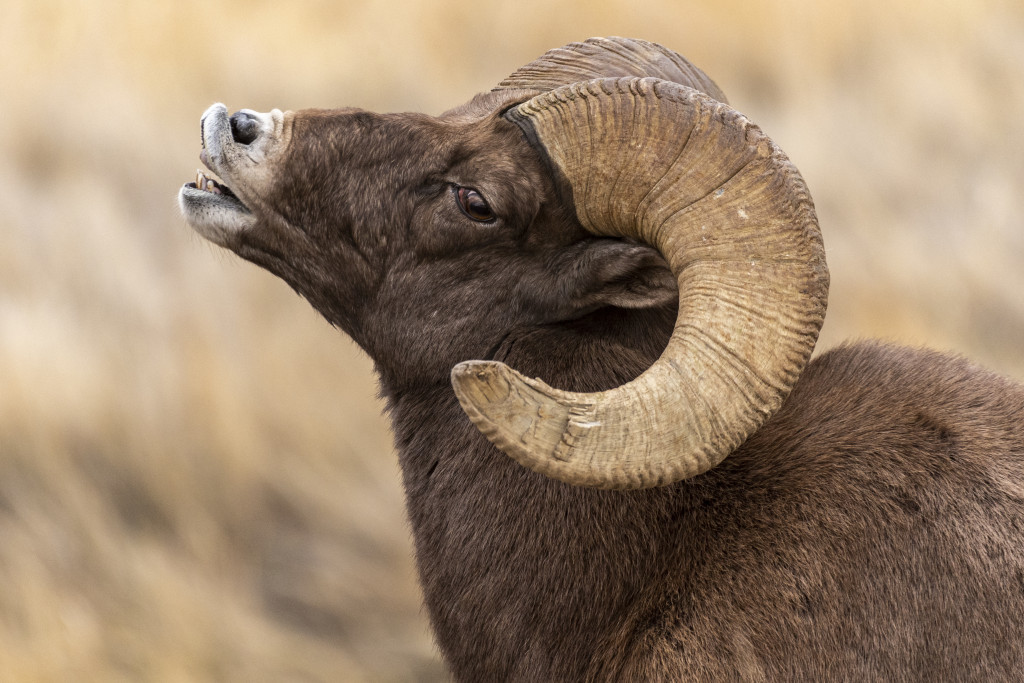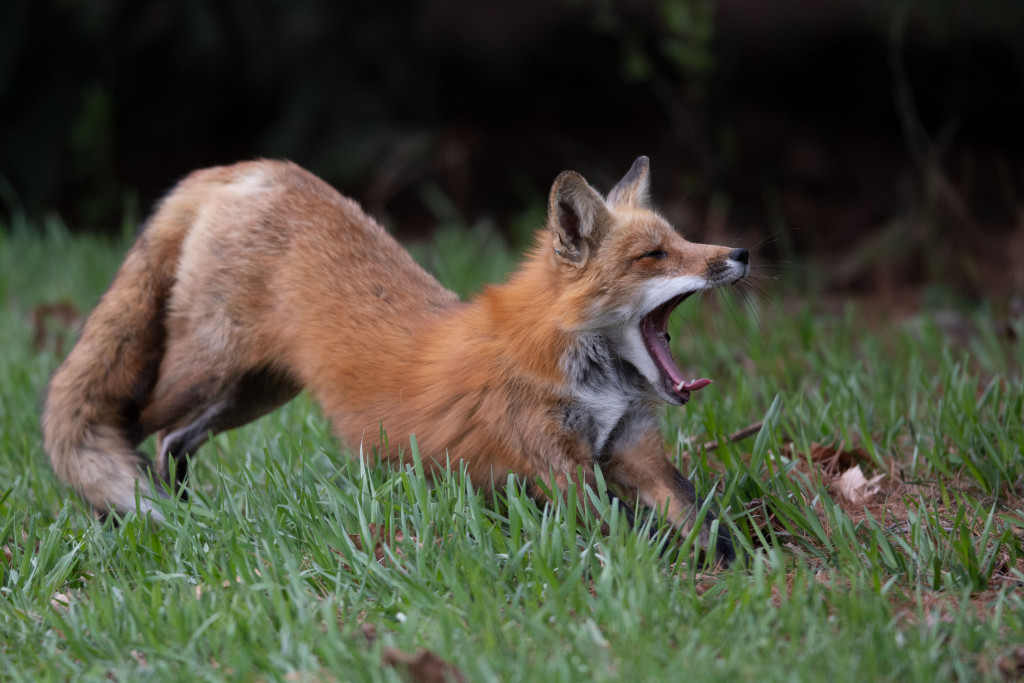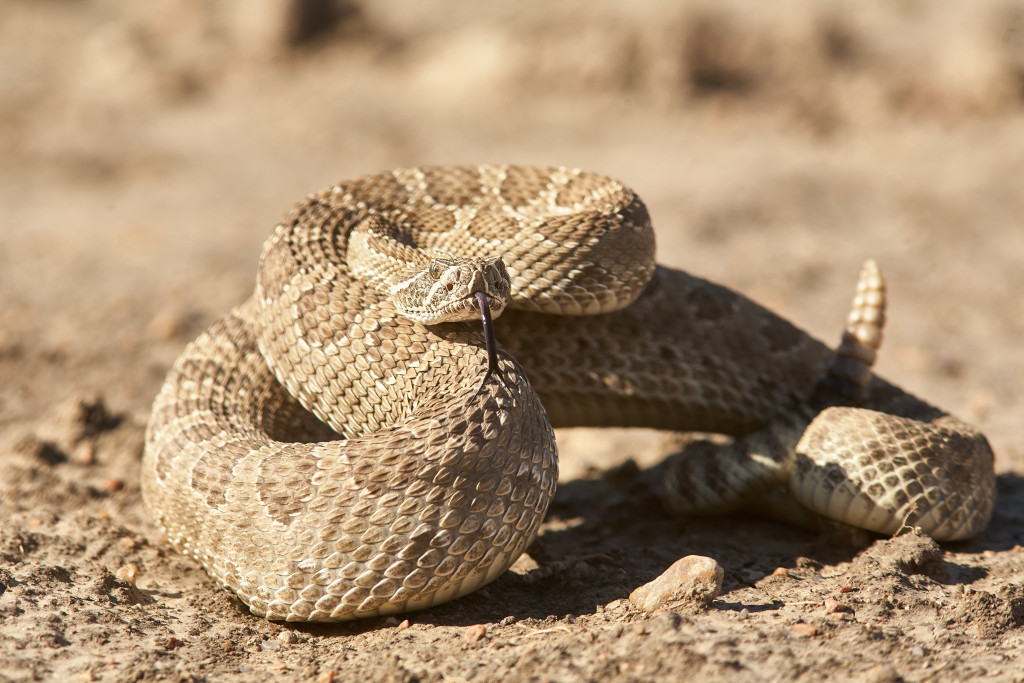
By Monica Macoubrie, Wildlife Education Specialist
While sight and hearing often take center stage, olfaction, or smell, is an essential tool that helps creatures navigate their surroundings, find food and communicate with one another. From the forked tongues of snakes that can detect the faintest scent of their prey to turkey vultures flying high to seek out carrion with their sensitive nostrils, animals across Nebraska have adapted their behaviors to rely heavily on this remarkable sense.
Mammals – Masters of Scent Detection
Mammals have evolved larger brains, particularly in areas associated with olfaction, to enhance their ability to detect and interpret scents. This difference is evident in species that rely heavily on smell for communication, foraging and predator avoidance. The olfactory bulb, responsible for processing scent information, is proportionally larger in many mammals compared to other animals, reflecting the importance of olfactory cues in their daily lives.
Canids, including coyotes, foxes and wolves, possess an extraordinary sense of smell that far surpasses that of humans, making them some of the best scent detectors in the animal kingdom. This remarkable olfactory ability is attributed to their anatomy, which includes a high number of olfactory receptors—estimated to be between 220 million and 300 million, compared to about 5 million in humans. The structure of a canid’s nose is specifically adapted for scent detection, featuring long, moist surfaces that help capture scent particles. This keen sense of smell enables canids to detect pheromones, locate prey and even differentiate between individual scents within a crowded environment.

For example, foxes depend on their keen sense of smell for finding food and communicating with one another, such as locating mates and detecting predators. With an acute sense of smell, they can detect food from about half a mile away and even sniff out items buried underground or sealed in bags.
Similarly, rodents exhibit larger brain regions dedicated to smell, supporting their foraging behavior and helping them recognize familiar scents and avoid danger. This enhanced olfactory processing aids in finding food and mates, and plays a role in social interactions and territorial behaviors.
Birds – Scent in Flight
Olfaction in birds has traditionally been underestimated, but recent research has revealed that many species possess a well-developed sense of smell that plays a purpose in their survival and behavior. Birds use olfactory cues for various purposes, including foraging, navigation and social interactions. For example, seabirds, such as the albatross, can detect fish and other food sources from miles away, using their acute sense of smell to locate prey in vast ocean expanses. Their olfactory bulbs are extremely large, indicating the importance of smell in their feeding strategies.
Additionally, many songbirds rely on scent for mate selection, with males using pheromones to signal their health and genetic fitness to potential partners. In nest-building species, olfaction helps locate suitable materials and identify threats, as many birds can detect the scent of predators in their vicinity.

Turkey vultures are famous for their remarkable sense of smell, which is essential to their scavenging lifestyle. Unlike many birds that primarily rely on vision to locate food, turkey vultures have evolved highly sensitive olfactory receptors that allow them to detect the scent of decaying carcasses from several miles away. This remarkable ability is especially advantageous in their foraging habits, as they often inhabit vast areas where food sources can be sparse.
Turkey vultures can sense the specific chemicals released during decomposition, such as hydrogen sulfide and other volatile organic compounds, guiding them to carrion that is in the early stages of decay. Their keen sense of smell enables them to find food that other scavengers, like eagles and hawks, may miss, as these birds often rely more on sight.
Once a turkey vulture locates a potential food source, it may circle overhead to confirm before descending to feast. This olfactory adaptation not only enhances their foraging efficiency but also plays a part in the ecosystem by helping to clean up dead animals and prevent the spread of disease.
Reptiles – Chemical Communication
Reptiles rely heavily on olfaction for various essential behaviors, including hunting, mating and territory establishment. Unlike mammals, many reptiles possess a unique organ called the Jacobson’s organ, or vomeronasal organ, located in the roof of their mouths. This specialized structure allows them to detect pheromones and other chemical signals in their environment, providing crucial information about potential mates, prey and rivals.

Prairie rattlesnakes, for example, utilize their highly developed sense of olfaction for hunting. By flicking their forked tongues, prairie rattlesnakes capture scent particles and transfer them to the Jacobson’s organ, enabling them to detect the presence of prey, potential mates or predators. This olfactory capability is particularly important for locating small mammals, such as rodents, which constitute a significant part of their diet. The rattlesnake’s ability to pick up on scents can lead it to fresh trails left by prey, even if the animals are not visible.
Furthermore, olfaction plays a role in mating behaviors, as males can detect pheromones released by females to signal their readiness to breed.
In addition to hunting and mating, prairie rattlesnakes may use scent cues to establish territories and communicate with other snakes, helping them avoid conflicts and maintain social hierarchies. Overall, the reliance on olfaction enhances the snakes’ survival and reproductive success in the varied habitats they inhabit across the Great Plains.
Insects – The Tiny Scent Specialists
Insects possess an extraordinary sense of olfaction, which plays a pivotal role in their survival, reproduction and foraging behaviors. They are equipped with specialized sensory structures called antennal lobes and olfactory receptors located on their antennae, allowing them to detect a wide range of chemical cues in their environment to find food, attract potential mates and sense threats.
Many moth species, for example, use pheromones—chemical signals released by females—to attract males from miles away, enabling effective mating even in low-visibility conditions. Ants and termites also utilize olfaction for social communication within their colonies, marking trails with pheromones that guide others to food sources or signal alarm when a threat is present. Additionally, some insects can detect the scent of predators or parasitic threats, allowing them to take evasive action.

Monarch butterflies utilize their highly developed sense of olfaction for various essential behaviors, particularly in locating food sources and navigating during their long migratory journeys. Equipped with specialized olfactory receptors on their antennae, monarchs can detect the scents of flowers, allowing them to identify nectar-rich plants essential for their survival. This ability not only helps them forage effectively but also plays a critical role in their role as pollinators in various ecosystems.
Additionally, during migration, which can span thousands of miles from North America to central Mexico, monarchs rely on olfactory cues to recognize and locate specific areas rich in milkweed—their primary food source for laying eggs. Furthermore, research suggests that scent plays a role in their ability to find mates; males may release pheromones to attract females, facilitating successful reproduction. Monarch butterflies also use olfactory cues to navigate and orient themselves during migration, helping them detect environmental markers that guide them along their migratory routes.
The ability to smell is a vital adaptation for many animals in Nebraska, influencing their behavior, survival and ecological interactions. From the adaptable coyote to the scavenging turkey vulture, the diverse scents of Nebraska’s wildlife highlight the complexity of these ecosystems. Understanding how different species use their sense of smell can deepen our appreciation for the intricate web of life that thrives in this region.
